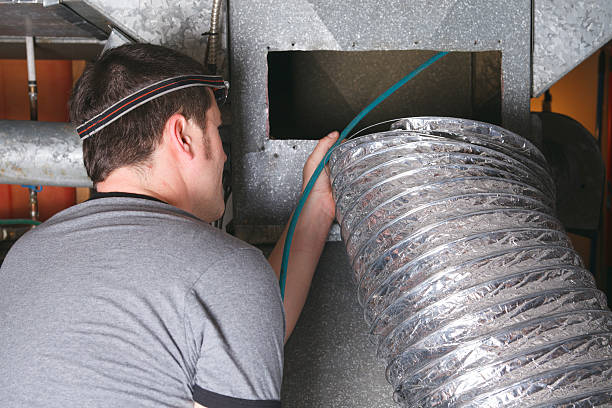Clean air is often linked to good health, as well as the health of your home and its structure. However, poor indoor air quality can be detrimental to your lungs and also ruin furniture, walls, and ceilings.
In this article, we’ll show you some signs to look out for to know when the quality of indoor air in your home isn’t great for you, your loved ones, and your properties.
Signs of Poor Indoor Air Quality
So how do you know if the air you breathe at home is of good quality? Before you start, it is advisable to call a specialist and carry out tests, some signs can already alert you.
1. Condensation and persistent mold
Do you regularly notice traces of humidity on your mirrors, windows, or even your walls? The hygrometry, that is to say, the level of humidity contained in the air of your house is certainly too high! If the condensation can be occasional, following the cooking of food or taking a hot shower, its presence should alert you when there is no visible source.
In addition, the accumulation of condensation is conducive to the development of mold on the walls or on damp linen. These can then be responsible for respiratory diseases or allergies, by increasing the risk of the proliferation of dust mites.
Last point that can tell you that the humidity in your home is too high is damaged walls and ceilings. If your wallpaper is peeling off, your paint cracks/swells or you observe white or vague spots, then the air in your home is too humid.
According to health professionals, the ideal humidity level of a house should be between 40 and 60%!
2. Excess dust and cracks
If it is normal to have dust in your home, the excessive presence of it can alert you to the air quality of your interior! Indeed, it is found particularly in homes where the humidity level is too low.
As static electricity is more present when the air is dry, it attracts and retains dust. You are then breathing saturated air, which is bad for your health.
In addition, you can observe many cracks:
-
- On your wooden furniture or your floor, a sign that they are dry.
-
- At the level of your doors and windows, deforming their frames and making them difficult to open/close.
-
- On your walls, either at the level of the paint or directly at the level of the plaster.
3. Temperature differences between rooms
More subtle, the temperature differences between the various rooms in your home are among the signs that should alert you. Indeed, these are a sign that the air is not circulating correctly, and that it is therefore not of good quality.
As the air is poorly mixed, it can generate humidity or, on the contrary, be too dry. It can then cause damage to your home in addition to being bad for your health.
If the circulation is not homogeneous, it is also possible to observe bad odors in certain rooms of your accommodation. The latter then persist, despite regular ventilation of the home.
How to Fix Poor Indoor Air Quality?
Call an indoor air quality professional to help you install, repair, and maintain the appliances that help you clean the air you breathe. Reach out to Precision HVAC today.
Frequently Asked Questions
Poor indoor air quality refers to the presence of pollutants or unhealthy conditions in the air within a home or building. This can include excessive humidity, dust, mold, and inadequate ventilation, all of which can negatively impact health and damage property.
Common signs include:
- Condensation and Mold: Persistent moisture on mirrors, windows, and walls, along with visible mold growth.
- Excess Dust: An unusually high amount of dust, particularly in dry environments.
- Temperature Differences: Noticeable temperature variations between rooms, indicating improper air circulation.
- Cracks in Surfaces: Cracks in wooden furniture, walls, and around windows and doors.
High humidity levels can lead to condensation on surfaces, creating an environment conducive to mold growth. Mold can cause respiratory issues and allergies, making it essential to monitor and maintain indoor humidity between 40% and 60%.
Poor Indoor Air Quality can cause or worsen respiratory issues, allergies, and asthma. It may also lead to fatigue, headaches, and a general decline in indoor comfort levels due to mold, dust mites, and dry air.
Yes, Poor Indoor Air Quality can lead to damage in the home, such as peeling wallpaper, cracked paint, and warped wooden furniture. High humidity and dryness can cause structural problems and require costly repairs if left unaddressed.

